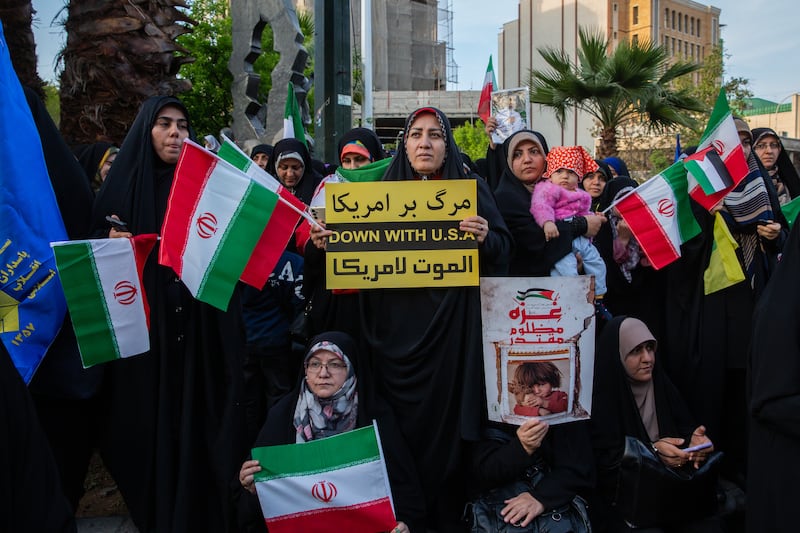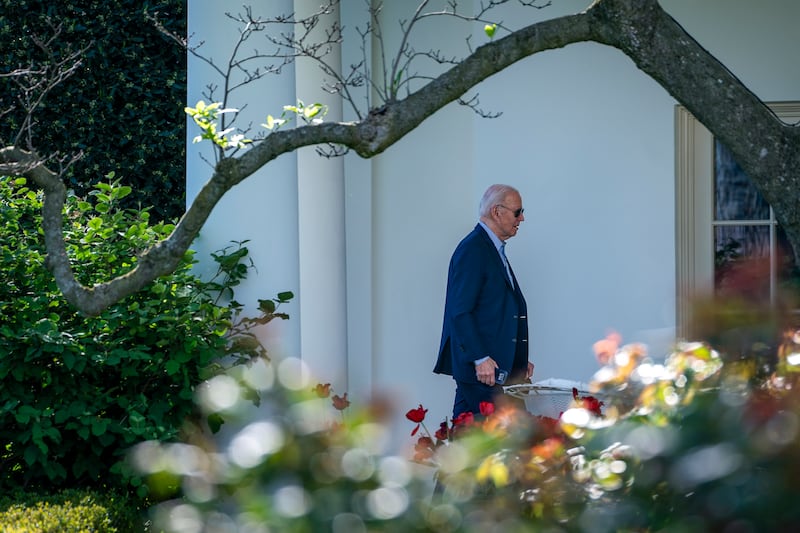Israel was mere moments away from an air strike on April 1st that killed several senior Iranian commanders at Iran’s embassy complex in Syria before it told the United States what was about to happen.
Israel’s closest ally had just been caught off guard. Publicly, US officials voiced support for Israel, but privately, they expressed anger that it would take such aggressive action against Iran without consulting Washington.
The Israelis had badly miscalculated, thinking that Iran would not react strongly, according to multiple US officials – a view shared by a senior Israeli official. Last weekend, Iran launched a retaliatory barrage of more than 300 drones and missiles at Israel – an unexpectedly large-scale response, if one that did minimal damage.
The events made clear that the unwritten rules of engagement in the long-simmering conflict between Israel and Iran have changed drastically in recent months, raising fears of an all-out war.
READ MORE
Even after it became clear that Iran would retaliate, US and Israeli officials initially thought the scale of the response would be fairly limited, before scrambling to revise their assessment again and again.
This account of these tense weeks is gleaned from interviews with US officials, as well as officials from Israel, Iran and other Middle Eastern states. All of them spoke on the condition of anonymity to discuss sensitive matters.
Planning for the Israeli strike in Syria started two months earlier, two Israeli officials said. The target was Muhammad Reza Zahedi, the commander for Syria and Lebanon of Iran’s elite Quds Force, a branch of the Revolutionary Guard.
About a week beforehand, on March 22nd, Israel’s war cabinet approved the operation, according to internal Israeli defence records.
Those records also outlined the range of responses from Iran that the Israeli government expected, among them small-scale attacks by proxies. None of the assessments predicted the ferocity of the Iranian response that actually occurred.


From the day of the strike, Iran vowed retaliation, both publicly and through diplomatic channels. But it also sent messages privately that it did not want outright war with Israel – and even less so with the US.
US officials found themselves in an odd position: They had been kept in the dark about an important action by a close ally, Israel, even as Iran, a long-time adversary, telegraphed its intentions well in advance.
When it came last weekend, Iran’s show of force was significant, but Israel and its allies intercepted nearly all of the missiles and drones. The few that reached their targets had little effect. Iranian officials say the attack was designed to inflict limited damage.
US officials told Israeli leaders to see their successful defence as a victory, suggesting that little or no further reply was needed. But despite international calls for de-escalation, Israeli officials argued that Iran’s attack required a response.
In fact, Israeli leaders came close to ordering widespread strikes in Iran on the night Iran attacked, according to Israeli officials.
Israeli officials say the October 7th attack by Hamas changed the ground rules of regional conflict. To its enemies, it was Israel’s subsequent invasion of the Gaza Strip that did that.

By March, the relationship between the Biden administration and Israel had grown increasingly fraught. Then came the Israeli strike in Damascus, which killed seven Iranian officers, including Zahedi.
The Israelis later acknowledged that they had badly misjudged the consequences of the strike, US officials and an Israeli official said.
US defence secretary Lloyd Austin complained directly to Israel’s minister for defence, Yoav Gallant, in a call on April 3rd, US officials said. Austin said the attack had put US forces in the region at risk, and that the lack of warning had left no time to ratchet up their defences.
The night of the Damascus strike, Iran’s ministry of foreign affairs summoned the Swiss ambassador in Tehran to convey Iran’s outrage to Washington, along with the message that it viewed the US, Israel’s primary backer, as accountable for the attack.
Using Oman, Turkey and Switzerland as intermediaries – Iran and the US do not have formal diplomatic relations – the US made clear to Iran that it had not been involved and that it did not want war.
The Iranian government then went on an unusually open and broad diplomatic campaign, spreading the word that it saw the attack as a violation of its sovereignty that required retaliation.

On April 7th, minister for foreign affairs Hossein Amir Abdollahian met his Omani counterpart, Badr Albusaidi. Oman is one of the main intermediaries between Iran and the West. The Iranian message at that meeting, according to a diplomat briefed on it, was that Iran had to strike back but that it would keep its attack contained.
Before and after that meeting there was a whirlwind of phone calls between gen Charles Brown, chair of the US joint chiefs of staff; secretary of state Antony Blinken; national security adviser Jake Sullivan; US president Joe Biden; Austin; their counterparts in Israel, China, India and Iraq; Nato allies; and others, officials said.
The Biden administration did not think it could dissuade Iran from attacking at all, a US official said, but hoped to limit the scale. Blinken talked to senior Israeli cabinet members, assuring them that the US would help defend against an Iranian attack, and urging them not to mount a rash counterstrike.
Iran’s message was that it would temper its attack so as not to elicit an Israeli counterstrike, Israeli and Iranian officials said. But in reality, the Israelis said, Iran was expanding its attack plans, and wanted at least some of its weapons to penetrate Israel’s defences.
On Wednesday, Biden publicly reinforced what he and his aides had repeatedly said: Despite friction with Israeli prime minister Binyamin Netanyahu, the US commitment to defending Israel from attacks was “ironclad”. Still, the Biden administration also redoubled its diplomatic efforts to head off a confrontation.
Israeli officials say that, thanks in part to international co-operation, they had a good idea in advance of Iran’s targets. The US military co-ordinated aerial defence efforts with Israeli, British and French forces as well as – crucially – those of Jordan, which lies between Iran and Israel.

News of the first wave of the Iranian attack Saturday, consisting of 185 relatively slow drones, spread worldwide hours before any of them reached Israel. The three dozen cruise missiles Iran launched later were much faster, but the biggest challenge was Iran’s ballistic missiles: Iran fired 110 of them, posing the first major test of Israel’s anti-ballistic missile defence system.
US, British, French, Israeli and Jordanian warplanes and air defence systems shot down most of the drones and missiles before they reached Israel. Only 75 entered Israeli airspace, where most of those were shot down, too, Israeli officials said.
Throughout the strike, Iran kept open a hotline to Oman’s government, to pass messages back and forth with the US, Iranian officials said.
Iran cast its barrage against Israel as a measured, justified act that should not lead to escalation.
“We carried out a limited operation, at the same level and proportion to the evil actions of the Zionist regime,” Hossein Salami, commander in chief of the Revolutionary Guard, said on state television.
[ Iran crisis may ease pressure on Israel over Gaza, diplomats warnOpens in new window ]
Biden told Netanyahu in a call that Israel’s successful defence had demonstrated its technical superiority, according to John Kirby, a national security spokesperson.
But Israeli officials described the attack in far more dire terms, in part because of its sheer scale. After news came of the Iranian launches Saturday, some leaders argued that Israel should retaliate immediately. Israel’s response finally came in the early hours of Friday. – This article originally appeared in the New York Times




















